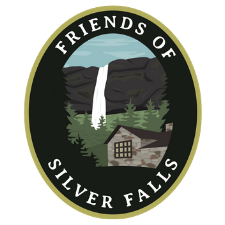by Kim Maley, Park Interpreter
Some call them horns. Some call them antlers. Some say it is a “po-tay-toe”, “po-tah-toe” situation. Some say it is a regional distinction. As it turns out, there is indeed a scientific difference. Starting with taxonomy, all animals belonging to the classification Suborder Ungalata, or hoofed mammals, have some type of head ornaments. Further down the taxonomy chain, however, Family classifications divide into either horned or antlered animals. Cervidae (deer, elk) fall into the antler category. Bovidae (antelope, buffalo, cattle) have horns.
Following is a brief look at some of the features of each:
OOPS, I THINK YOU DROPPED SOMETHING
Antlers are shed and regrow each year. As one of the fastest growing tissues, elk antlers can grow 1” per day and can weigh up to 40 pounds each! Shed season is dependent on the specie - deer around the first of the year; elk in Spring. Shed hunting is prohibited in some areas so check before you collect.
VELVETY SOFT
Antlers are covered with a vascularized fuzzy skin during the entirety of their growing season. When the bone “dies”, the velvet is then rubbed off, leaving behind a pair of shiny antlers that are apparently eye candy to the girls!
BOYS ONLY CLUB
Antlers are a male-only feature in the Cervidae family. A notable exception is the Caribou. Antlers serve the dual purpose of demonstrating health and dominance (the bigger - the better); and as a useful weapon to fight against competing males for the ladies’ attention.
A PERMANENT FEATURE
Horns never stop growing. Unless broken off, an animal will have it’s horns it’s entire life. Horns are composed of keratin whereas antlers are bone.
The model in this photo is a Pronghorn Antelope and is an exception to the rule. Pronghorns will lose their horns annually unlike other horned animals. Fun Fact: True antelopes are Old World species (Africa, Eurasia) whereas this North American animal is not a true antelope but is referred to as such because of its similar appearance and similarities in an ecological role.
A FORK IN THE ROAD
Horns never branch. Those fabulous multi-pointed specimen are but a dream to the horned animals of the Bovidae family.
SILVER FALLS LOCALS
Silver Falls State Park and surrounding area is home to a healthy population of Black-tail deer (Odocoileus hemionus columbianus) and also herds of the more elusive Roosevelt Elk (Cervus canadensis roosevelti). Drive carefully: the deer think they own the place! (And actually, they do!)
BLACK-TAIL DEER TAXONOMY
Kingdom: Animalia
Phylum: Chordata
Class: Mammalia
Order: Artiodactyla
Suborder: Ungalata
Family: Cervidae
Genus: Odocoileus
Specie: hemionus
Subspecie: columbianus
ROOSEVELT ELK TAXONOMY
Kingdom: Animalia
Phylum: Chordata
Class: Mammalia
Order: Artiodactyla
Suborder: Ungalata
Family: Cervidae
Genus: Cervus
Specie: canadensis
Subspecie: roosevelti






